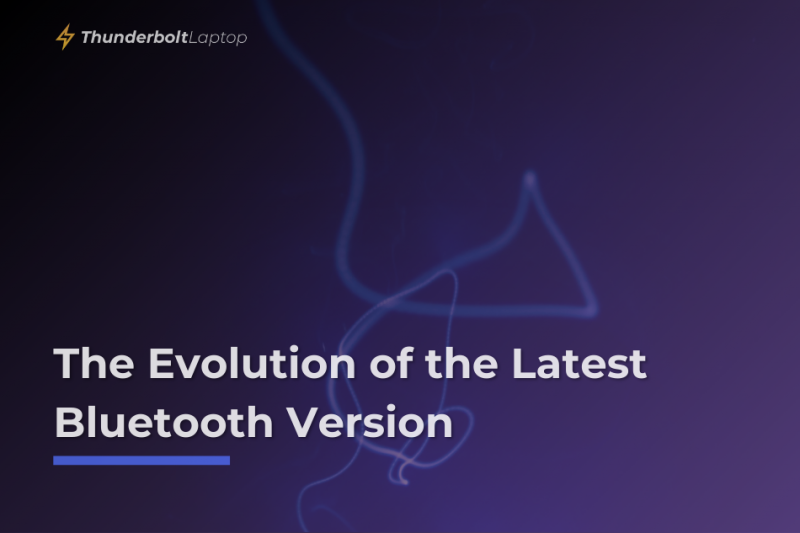To say that Bluetooth made mobile device interfacing more convenient is an understatement. It revolutionized the way we use external peripherals and gadgets today.
But as advanced as it may already seem to us, Bluetooth is still built like any other design protocol: its technology standard is meant to keep on improving and evolving. And so, we take a brief comparative look at its fundamental technology, as well as its recent updates over the last decade.
Table of Contents
Bluetooth 5.0 Arrives: The Open, Wireless Path
The very first official specification development for Bluetooth 5.0 was made in December 2016, with the very first supported devices arriving on the consumer market sometime during the second quarter of 2017.
The update was mainly promoted with efficiency in mind, touting the improved energy consumption of devices supporting it (even more than 4.0) and its increased effective range. More importantly, it introduced the Slot Availability Mask (SAM) feature. Briefly explained, it is a systematized communication scheduling system for multiple Bluetooth devices connected to one main hub.
These three features are just some of the optimizations that the new standard has made specifically for the Internet of Things (IoT), which at this point in our time has become increasingly common in most homes with tech access.
Aside from that, there are also a couple of new perks that more updated Bluetooth 5.0 devices started enjoying, such as:
- Increased data transfer speed at shorter ranges
- (Further) increased data transfer range at slower speed rates
- Overall data transfer speed improvement (2 Mbps)
Additionally, Dual Audio feature support also started with Bluetooth 5.0. As the name suggests, it is a feature that allows two separate Bluetooth audio devices to output sound from the same primary device. This doesn’t just work for a single source/channel of sound but can even be configured so that two different sound streams can play on two separate sound output devices, with all its data coming from just one single unit.
Of course, like all other Bluetooth standard updates, these newer features are only available when both the connected device and primary unit support Bluetooth 5.0. For Bluetooth Low Energy (BLE), older Bluetooth 4.0 or 4.2 devices will still be able to use the feature, albeit with its older, slightly less efficient version. While Bluetooth 5.0 also provides this feature to headsets, this will not be available if either the main unit or wireless device doesn’t support it.
Enter Bluetooth 5.1: Redefining the Platform
Roughly two years later, the Bluetooth standard was updated once again to include Bluetooth 5.1, and then later on Bluetooth 5.2. The former was first officially introduced at the start of the year in January 2019, while the latter was announced at the very end of that same year, in December.
While Bluetooth 5.1 had a lot more minor tweaks, most of the updates were essentially optimizations to its very internal workings. In particular, Bluetooth 5.1 made it possible to more accurately track the signals that go back and forth between devices. Thus, updated Bluetooth devices can now pinpoint your exact location. Of course, this feature was still limited to the maximum efficient range of a Bluetooth 5.1 device. But for the most part, it can be conveniently used to quickly find connected items and devices nearby and/or to properly set up specific signaling points around the main unit’s effective signal range.
Other notable optimizations are specified as follows:
- Creation of an index of advertising channels (used in connecting multiple devices)
- Generic Attribute Profile (GATT) caching
- HCI support added for debugging keys for Low-Energy (LE) Secure Connections feature
- Specifying device behavior when protocols are violated
- Added mechanism for sleep clock accuracy update
Some of these updates aren’t nearly as noticeable, nor are they even of any significant importance to user experience. But overall, they do make the connections and operation of Bluetooth devices much smoother. The development of GATT caching, for example, help make initial connections between devices more seamless. Its advertising protocols also make it far less likely that multiple devices (connected to the same unit) would interfere with one another by assigning the channels randomly per device connected.
Bluetooth 5.2 Follow-Up: Meeting from Opposite Ends
When Bluetooth 5.2 finally came, the new features were more or less simple additions to previously made optimizations. Most of which simply build upon the more enhanced features that were already introduced in versions 5.0 and 5.1.
Low Energy (LE) Isochronous Channel
Bluetooth 5.2 introduces a new, physical channel that can be added to any of the Bluetooth LE physical layers (aside from 1M, 2M, and Coded PHY). To simplify its use, it allows multi-directional communication between two or more devices connected via Bluetooth. This is a significant step up from Bluetooth 5.0, which originally introduced multiple audio outputs. Speaking of audio…
Low-Energy (LE) Audio
Once again, Bluetooth audio received yet another update to its efficiency in the form of LE audio. To sum up all of its (integrated) features, it uses the dedicated LE isochronous channel to enhance sound transmission using a high-quality, low-power codec, allowing multiple synchronized audio streams with efficient energy use. LE Audio is typically promoted with hearing aids in mind, where efficient power consumption is an absolute necessity for extended use.
LE Power Control
Before, signal strength is only provided as an indicator, a status information type showing if the device position is optimal or not. Using LE Power Control, the received signal strength indicator (RSSI) can now be directly evaluated to automatically adjust the power provided to either the device or the main unit transmitter. In effect, signal control becomes significantly better, and data transmission error rates can be reduced as it adjusts. As a bonus, these automated signal amplification features make it possible to reduce even further its potential interference over networks communicating through the standard 2.4Ghz band.
Enhanced Attribute Protocol (EATT)
This is the next evolutionary level for the original Attribute Protocol (ATT). The idea is conceptually similar to LE Isochronous Channel, but this time we are referring to instructions rather than data streams. By using the newer EATT, micro-delays between multiple Bluetooth devices using the same app (such as a game that uses both headphones and controller) becomes virtually non-existent. The main unit will be able to transmit instructions to one device; it just receives a different set of instructions back to the device app.
Removed Features Starting Bluetooth 5.0
As with any technology standard update that needs to contend with obsolescence, there have been a few features that were eventually removed from Bluetooth starting 5.0. These are:
Park mode/state – as of Bluetooth 5.0, park mode will no longer be available. For those unfamiliar, a park mode or state is when the Bluetooth device becomes passively connected to the main unit due to being technically set to idle. These devices no longer use their registered MAC address, but instead simply “listen” to the signals sent by the main unit.
Unit key – this one was removed from the standard as of Bluetooth 5.1. This is an arbitrary identification code assigned to a Bluetooth device when it is first wirelessly installed/connected to the main unit. It is a component of Bluetooth security protocols. However, it is most likely removed precisely due to the potential loopholes that it could generate as the main unit tries to identify devices connecting to it.
Comparing Pre-Version Change Updates to Bluetooth 5.2
When comparing the last updates made right before each major revision version after 2010, we are presented with several paradigm-defining differences that changed the design standard forever. Specifically, we will compare version 3.0 + HS to version 4.0, and then version 4.2 to 5.0:
Bluetooth 3.0 + HS (version right before 4.0)
Version 3.0 + HS formerly used a Wi-Fi radio for its operation, hence its significantly increased speed. However, as version 4.0 rolled over, developers realized that there is no practical need for high-speed data transfer over Bluetooth. It was then concluded that communicating instructions and data streams were more critical. Thus, efficiency in the form of low power consumption eventually became more prioritized.
| Bluetooth 3.0 + HS | Bluetooth 4.0 | |
|---|---|---|
| Signature Feature | High Speed | Low Power |
| Optimal Speed | 24 Mbps | 1 Mbps |
| Effective Range | 10 meters | 50 meters |
| Encryption | Relatively simple | Industry-standard |
Bluetooth 4.2 (version right before 5.0)
As mentioned earlier, overall efficiency was the theme for Bluetooth 5.0 and, as such, received upgrades from every single specification that it can compete with. We are looking at an overall 200% to 400% improved performance rate over the older version 4.2 (including LE!). Most importantly, Bluetooth gave a firm emphasis on IoT support, which became even more prevalent with intercommunicating devices today.
| Bluetooth 4.2 | Bluetooth 5.0 | |
|---|---|---|
| Signature Feature | Patched IoT Support | Default IoT Support |
| Optimal Speed | 1 Mbps | 2 Mbps |
| Effective Range | 10 / 50 meters | 40 / 200 meters |
| Encryption | Industry-standard | More robust identification |
So, what does the future of Bluetooth bring after this point? Nobody knows for sure. But, as we become more and more interconnected with the technology at our fingertips, it is expected that more enhancements will be necessary. This will either update existing protocols to fix yet-to-be-seen vulnerabilities or allow us to anticipate new applications for wireless devices shortly.





